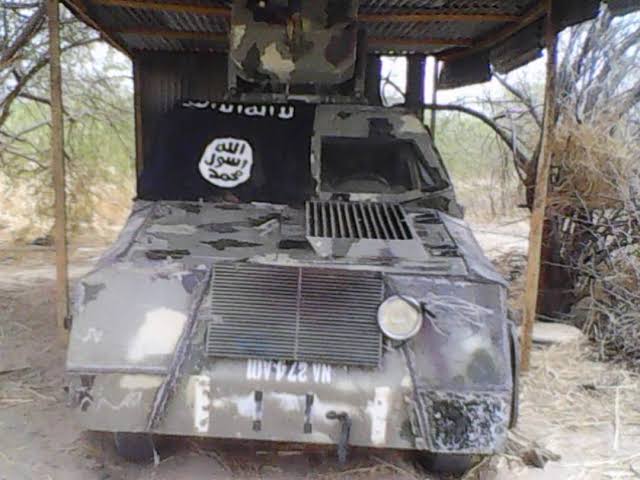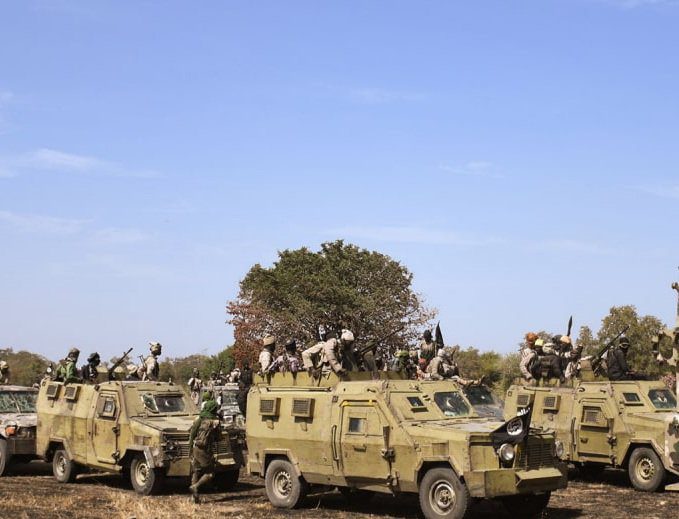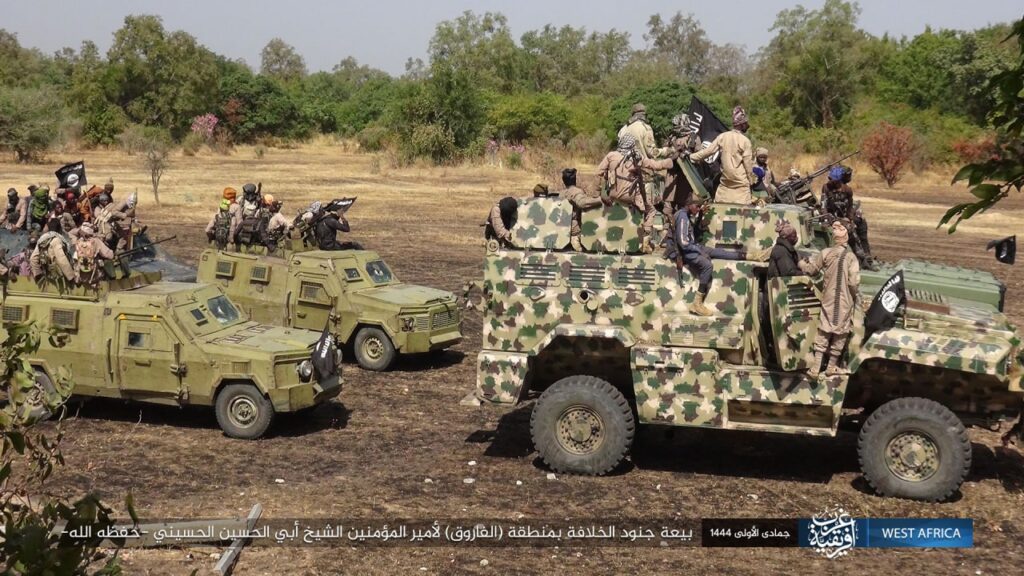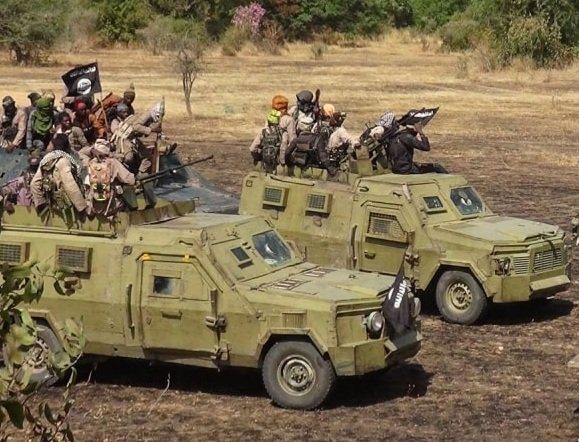The Islamic State West Africa Province (ISWAP) ability to commandeer, refit, and deploy different types of armoured vehicles in battle against national forces worries defence planners and strategists.
Despite the Nigerian military and it’s regional allies domiciled under the auspice of the Multinational Joint Task Force (MNJTF) spirited efforts in dislodging ISWAP from all their enclaves, the group still retains it’s ability to acquire armoured vehicles to sustain their campaign.
Strategically, ISWAP and it’s sister terror group Jama’atu Ahlis Sunnah lid-Da’wati wa’l-Jihad also known as JAS or Boko Haram has been more or less subdued to their lowest strength.
JAS (Boko Haram); on the battlefield is now considered a spent force, and insignificant. However, on the other hand, ISWAP still maintains a sliver of warfighting capacity. These is directly connected to their ability to capture, modify, and utilise motorised vehicles, and boats to navigate water bodies.
JAS primarily make use of two types of vehicles to spearhead it’s attacks against national forces as well as carry out ambushes.
First, are captured armoured personnel carriers, armoured combat vehicles, mraps, technicals, and sometimes (albeit rarely) main battle tanks.
They capture these types of armoured combat vehicles whenever they overrun a national military’s position. In such instance, ISWAP refits the captured vehicles with Heavy Machine Guns (HMG) such as the Soviet-designed NSV and DShK HMGs, Chinese-designed W-85, and Type 85 HMGs chambered for 12.7 mm bullets.
For technicals, they mount multiple rocket launcher tubes for firing 107mm and 122mm unguided rockets, and in some cases dual configuration with a recoilless gun and HMG.
These weapons are also mostly captured from national forces, or acquired from the black market and smuggled into the country through the porous borders.



The second type of vehicles predominantly utilized by ISWAP are improvised up-armoured vehicle, mostly use as regular troops transport vehicle, and sometimes as suicide vehicle-borne improvised explosive devices (SVBIEDs) to penetrate national forces defensive positions.
The terror groups are also known for salvaging reinforced parts and materials from captured or abandoned military armoured vehicles such as armoured glass windshields and attaching them to up-armoured their own vehicles most times on Toyota Chassis.
Toyota Hilux and Buffalo Land Cruisers make up a significant portion of the vehicles in the ISWAP inventory, and usually deployed with ground assault and anti-aircraft weapon systems. They are mostly used for troops transport and for fire support. In the latter scenerio, using a mounted HMG or recoilless rifle.
It is worth stating that majority of this vehicles are usually either destroyed of retrieved by the militaries of the MNJTF alliance, with the bulk of the efforts coming from the Nigerian Army and the Air Force (NAF).
These armoured vehicles (both improvised and otherwise) are routinely targeted by fixed and rotary combat aircraft of the NAF. However, the terror group has adapted by hiding them underneath tree cover and covering vehicles with leaves and mud to evade aircraft.
The terror group’s ability to acquire, operationalize, and deploy these vehicles signals a higher level of mechanical competencies to use commercial off-the-shelf components or parts from captured vehicles to keep it’s inventory active, thus continues to pose a challenge to national forces, and defence strategists.
Besides airstrikes, the land forces response to this threat are usually artillery strikes against the terror group’s convoys and staging areas.
Secondly, the Nigerian Army (NA) answer also comes in form of combat vehicles armed with higher caliber guns capable of penetrating the armour of the terrorists vehicles.
The NA typically utilizes it’s main battle tanks composing of VT-4s, T-72s, Vickers, and T-55; armoured combat vehicles like the ST-1 gun support vehicle, FV101 Scorpion, FV107 Scimitar, ERC-90 Sagaie, and Panhard AML to neutralize the threat.
Although, quite able to handle the threat posed by the armoured vehicles of the terrorists, the NA vehicles are also vulnerable to rocket propelled grenades and recoilless rifle fire.
As long as the jihadists continues to lay their hands on armoured vehicles captured from national forces, these threat will continue to exist thus, prolonging the conflict.
However, Nigeria’s forces armed with modern long-range surveillance and detection sensors capable of detecting vehicles using real-time image recognition software, and Artificial Intelligence, and connected to firepower will able to neutralize these threat from a distance thereby turning the table against the terrorists.


